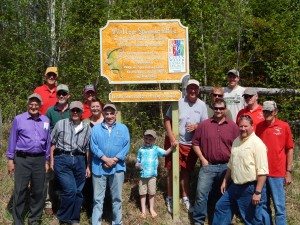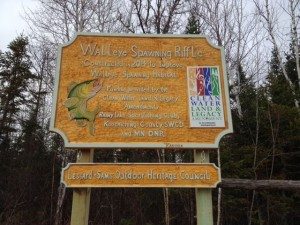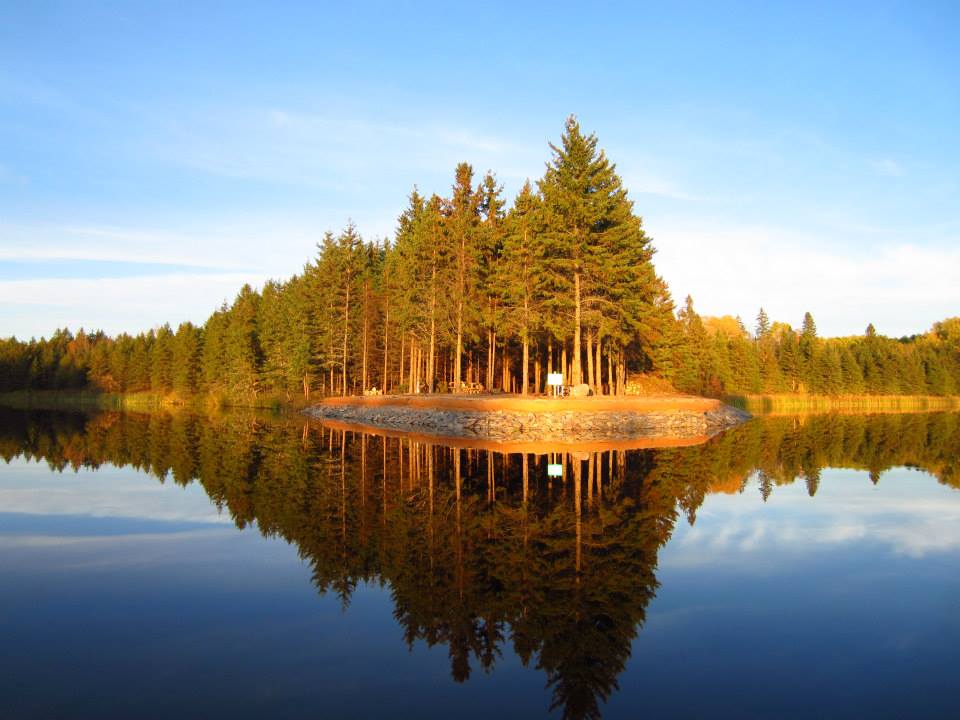CPL funding for the Rat Root River Sediment Control and Spawning Enhancement Project (Phase II) was awarded in February 2012 in the amount of $215,000 with local matching funds of $32,250 from the RLSC and Koochiching County for a project total of $247,250. This grant provided funds to open and remove approximately 40 log jams, remove additional deadfall wood, install erosion control measures in high priority locations along the river’s streambanks, and install spawning rock in locations determined by DNR Fisheries.
Because the Rat Root can experience very high water levels in the spring, we expected to find new jams forming from deadfall and wood carried downstream. In spring 2012, contracted labor continued the process of opening and removing channel blocking log jams in the Rat Root River, beginning at the Galvin Line Bridge and continuing south for approximately 15 miles.
The winter of 2012 provided very little snow with a few weeks of cold weather which produced very good ice on the river. These conditions allowed log jam removal to be very successful as over 90% of the wood in each jam was above ice and easily accessible. Trees that were dead and hanging entirely across the river channel were also removed to prevent future jams. All of the work was completed by a five man crew using hand operated equipment to avoid disturbing sensitive shoreland areas.
Spring of 2013 brought above average temperatures which caused the ice to melt rapidly and work began in open water. As noted by the contractor in his activity report, working during open water seemed to be the “ticket” for removing much of the remaining wood in the jams. Completely removing individual logs from the bottom portion of the jam greatly increased low-water access for navigational purposes. It was also noted by various users of the river that the current in the channel seemed to be at its highest speed compared to historical spring flows. This in water flow provides multiple benefits for the river, the most significant being the cleaning of spawning substrate during the spring as walleye are heading upstream to spawn.
In the fall of 2013, erosion control practices were implemented at a picnic site and fish camp site on Rat Root Lake. The erosion sites were engineered with support from the Technical Service Area (TSA) 8 Northern MN Joint Powers Board, technical help from the Koochiching SWCD and MN DNR, and construction by Anderson Barging and Viita Construction. Both sites used a combination of rock rip rap, bio-engineering, and native tree cuttings to stabilize more than 900 feet of shoreline.
In fall 2014, Conservation Corps of Minnesota field crews continued efforts to improve navigability upstream by removing new log jams that formed at known congregation points along the Rat Root River.
Also beginning in the fall of 2014 was the first of two walleye spawning enhancements where a rock riffle was constructed upstream of the Galvin Line bridge. This project was completed with contracting by Up North Builders, technical assistance through Koochiching SWCD and MN DNR, and engineering designs by Sandy Verry of Ellen River Partners. The enhancement project was an arc of specific diameter stones that would create a rock spawning riffle on the bed of the river. The riffle is intended to draw water from the river toward the center and increase flow over the rocks to wash away sediment so the walleye have a clean substrate on which to lay their eggs. In March 2015, the second spawning riffle was constructed by Up North Builders a few miles southwest of the first riffle.
Click here to read more about the 2014 Riffle Dedication | Click here to view the Phase II Final Report



 The Rainy Lake Sportfishing Club (RLSC), assisted by local DNR, partnered with the Koochiching Soil & Water Conservation District (SWCD) to address the increase in log jams along the Rat Root River as well as the decline in walleye spawning. In January of 2011, the Koochiching SWCD received a small Conservation Partners Legacy (CPL) grant for $22,500 that was matched with $1,500 cash and $944 in-kind contributions provided by the RLSC.
The Rainy Lake Sportfishing Club (RLSC), assisted by local DNR, partnered with the Koochiching Soil & Water Conservation District (SWCD) to address the increase in log jams along the Rat Root River as well as the decline in walleye spawning. In January of 2011, the Koochiching SWCD received a small Conservation Partners Legacy (CPL) grant for $22,500 that was matched with $1,500 cash and $944 in-kind contributions provided by the RLSC.